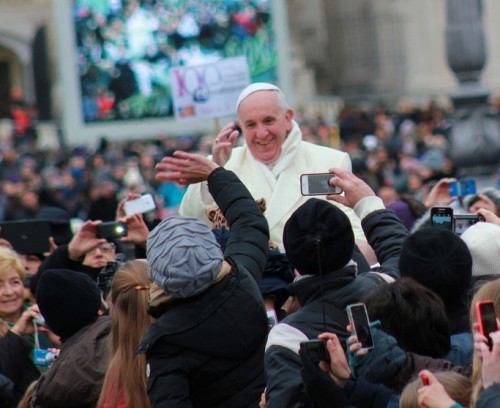24th December 2013
Communicating the Good News


Pope Francis places great emphasis in his Apostolic Exhortation Evangelii Guadium on communication. In large part, he declares, communicating the Gospel is the Church’s principal mission statement.
This is not, of course, a new message, although the emphasis may be. But it was perhaps no coincidence that the Holy See recently announced that the means of communication at its disposal will be subject to outside scrutiny, both in terms of efficiency and value for money. Anyone interested in communications should be interested in the outcome, given the extensive communications networks run by the Holy See and the Vatican, and the global audience that they reach.
The grand-daddy is L’Osservatore Romano, the Vatican’s daily newspaper, founded in 1861 and still going strong 46,540 editions later. It prints in eight languages including its weekly editions, has 100,000 readers, and its articles are syndicated throughout the global Catholic media.
Once a rather dry paper of record of Papal activities, it has become over the last few years a fascinating source of information not available elsewhere, especially on cultural and inter-religious concerns. It is a must-read for diplomats accredited to the Holy See.
Vatican Radio has been around since Gulglielmo Marconi helped Pius XI launch the first ever Papal broadcast in 1931. Operating on analogue and digital, and available on the internet, it operates in 45 languages. It can be heard in just about every corner of the world where Christians are present. I find myself quite regularly in their studios under the walls of Castel Sant’Angelo in Rome, interviewing on anything from Holy See and UK policies on poverty, or human rights.
Vatican Television (CTV) is a more recent phenomenon. Instituted in 1983, it provides content – including live streaming and video-news – focused principally on the Pope and his teachings. CTV provided much of the imagery of Pope Francis’ election in March 2013, watched by hundreds of millions around the world.
Perhaps its most spectacular recent transmission was the departure of Pope Benedict XVI from the Vatican to Castel Gandolfo, using 4 control cabins, 17 cameras and a specially equipped helicopter.
These more traditional media are supplemented by a growing operation on digital. Daily digital news makes Vatican Radio and L’Osservatore Romano available on the web, while the Pope’s forays on Twitter – initiated in 2012 and managed by the Pontifical Council for Social Communications – now reach over 60 million people if retweets are considered, more than any other world leader.
I find all this an impressive multi-lingual, multi-continental, multi-media operation. The Vatican Press Office, which seeks to bring the threads together, is coping with unprecedented news demand during this new Pontificate: 6,000 journalists alone were accredited for the Conclave and election of Pope Francis.
Outreach is immense, and I suspect that no one really knows the size of the total audience. It is no surprise, therefore, that the Pope thinks that it is time for a review of operations. There is no point in communicating into a vacuum, and as the BBC has discovered, a regular reappraisal of audience, content and mission is vital if media are to remain relevant.
What is clear, though, is that wherever you are this Christmas, you will almost certainly – even without trying – find yourself watching, listening to or reading content produced by one of the media run by the Vatican.
I am not conducting a formal review of this blog, but I would be delighted on your thoughts either on this posting or any of our other blog posts over the last year. I hope we have helped to keep you informed and interested in the work of this Embassy. In the meantime, may I take this opportunity to wish all readers our very best wishes for Christmas and the New Year. Auguri!
Wishing you the very best in 2014!